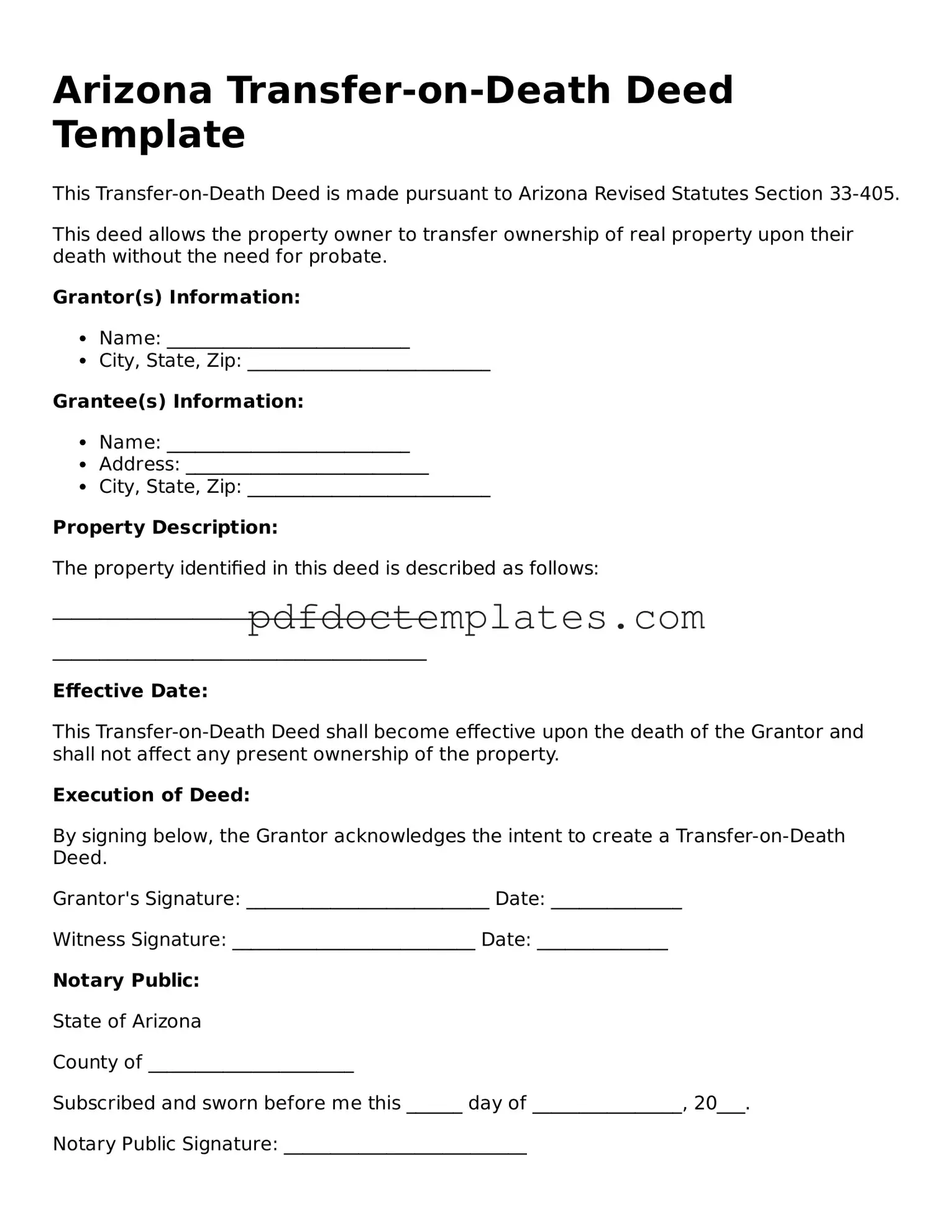Arizona Transfer-on-Death Deed Template
This Transfer-on-Death Deed is made pursuant to Arizona Revised Statutes Section 33-405.
This deed allows the property owner to transfer ownership of real property upon their death without the need for probate.
Grantor(s) Information:
- Name: __________________________
- City, State, Zip: __________________________
Grantee(s) Information:
- Name: __________________________
- Address: __________________________
- City, State, Zip: __________________________
Property Description:
The property identified in this deed is described as follows:
________________________________________
________________________________________
Effective Date:
This Transfer-on-Death Deed shall become effective upon the death of the Grantor and shall not affect any present ownership of the property.
Execution of Deed:
By signing below, the Grantor acknowledges the intent to create a Transfer-on-Death Deed.
Grantor's Signature: __________________________ Date: ______________
Witness Signature: __________________________ Date: ______________
Notary Public:
State of Arizona
County of ______________________
Subscribed and sworn before me this ______ day of ________________, 20___.
Notary Public Signature: __________________________
My commission expires: ____________
